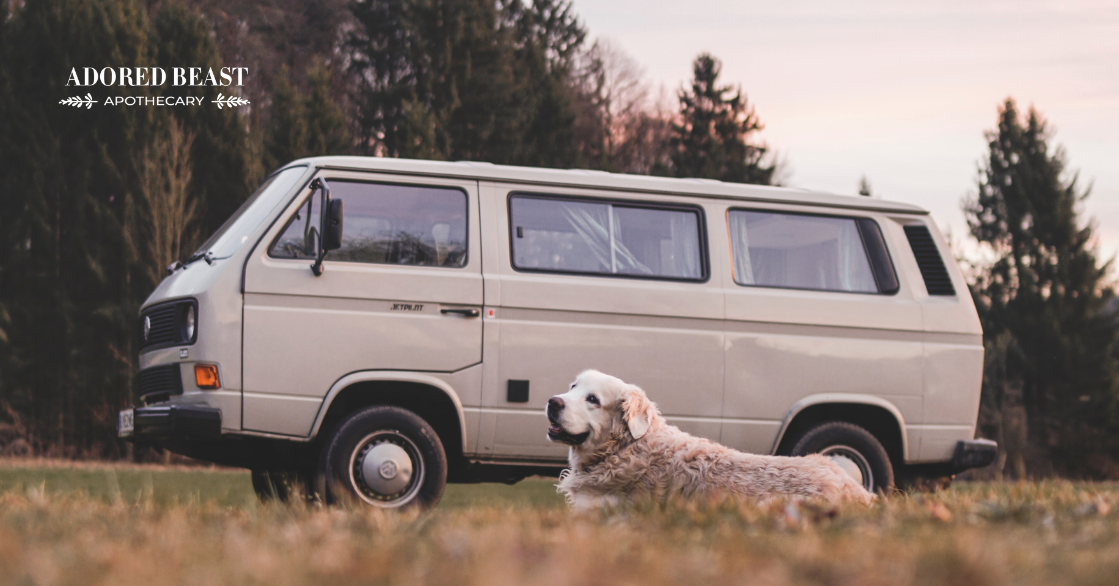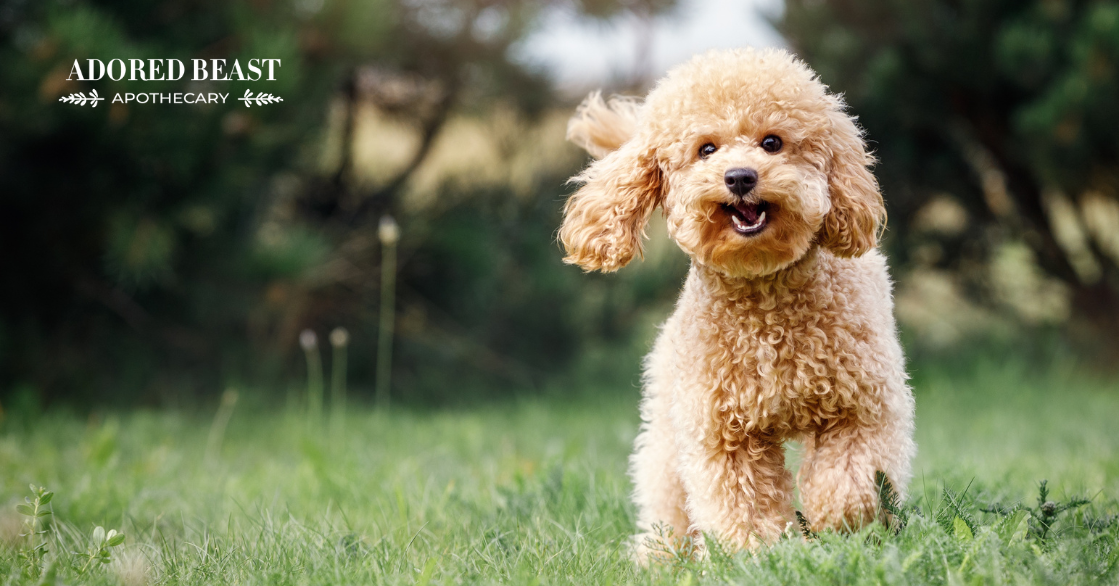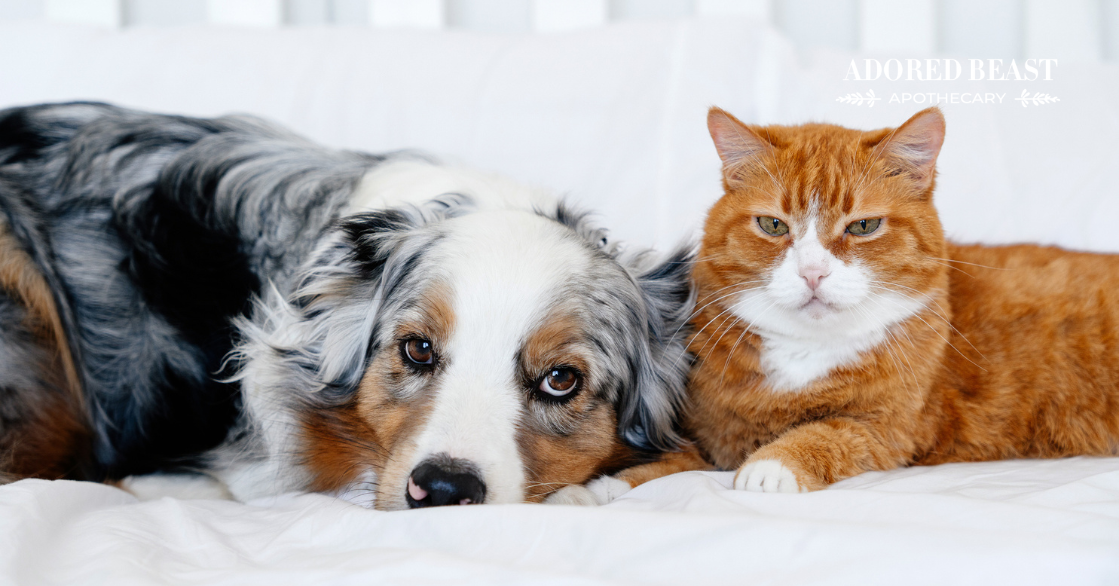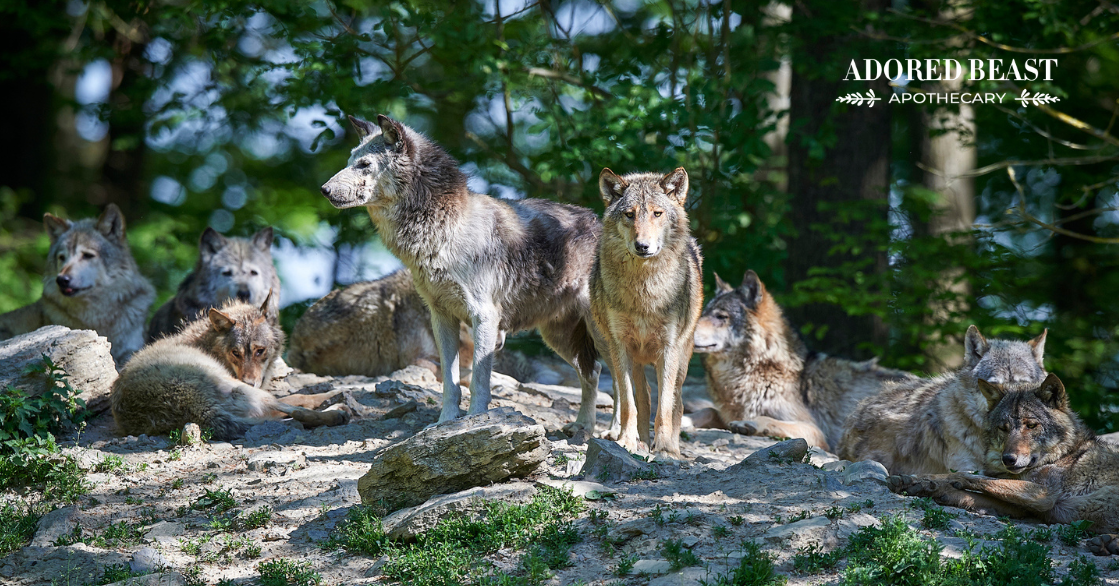During the summer, there’s nothing better than packing up the car and heading out on the road. Whether you’re travelling across the country to sightsee, across the province/state to visit family or friends, or just to camp a few hours away, a road trip can be so much fun.
And even more fun if your pets are coming along for the ride!
But as with any trip, going on a road trip with a dog or cat (or both) requires a bit of thinking ahead. You want to make sure you’re taking their needs into account – because they may not always be the same as yours.
If you plan on heading out on the open road this summer, use this guide to help make it smooth sailing along the way.
Tips for a Road Trip with a Dog or Cat
Taking a road trip with a dog or cat can be easy with a little prep. Ready, set, drive!
1. Dealing with Car Sickness or Anxiety
Some pets love the car. In our house, just saying the words “car ride” elicits an over-the-top excited response, one that would lead you to believe our dogs never leave the house. It doesn’t matter where we’re going – around the corner or away for days – it must be somewhere fun.
Others, however, are not so keen to jump in. Start by working to build up their confidence in the car by taking short trips a few times a week. Use positive reinforcement to show her the car is a safe place. There are also several remedies you can use to help keep her calm during the trip:
- Julie’s top homeopathic remedies are aconite 1M or 200C given 1 hour prior to the trip, and argentum nitricum 200C and phosphorus 200C can both be added to the mix as well. Take 2 pellets of each remedy, add them to a cup of water, let them dissolve for 30 minutes to an hour, and give the water to your pet.
- Bach Flower Essence Rescue Remedy is also a good choice. Start putting it in your pet’s water, 4-5 drops, in the afternoon.
- CBD oil can also provide natural calming for your pet. Follow the directions on the bottle for proper dosing. Give it about 30 minutes before you head out.
If your pet gets carsick, take a few steps to help rebalance her equilibrium (motion sickness is related to the sense of balance). It’s most often seen in puppies, but older dogs can have it as well.
If you know your pet is prone to carsickness, consider:
- Direct the field of vision. Watching the world speed by in a blur through a side window can be nauseating. Put your dog in the middle seat in the back so she’s more likely to look forward. Use a doggie seat belt, safety harness, or crate to keep her safely in place.
- Let in the fresh air. Opening the window a few inches helps to equalize inside and outside air pressure and that can help reduce nausea. Keeping the car cool and well ventilated is also helpful.
- Restrict your dog’s food intake prior to travel. If possible, withhold food for 12 hours before the car trip. But don’t restrict access to fresh water.
- Bring something that smells like home for added comfort.
- For cats, make sure the carrier is facing the front of the car, not the side, and on as flat a surface as possible. Use blankets or towels to balance it out. If you can’t get it flat, make sure the lower end is the back of the carrier, not the front, so your kitty doesn’t pitch forward every time you brake.
- Putting a light, breathable cotton sheet over the side of your cat’s carrier can also be helpful.
Good remedies for carsickness are aconite, tabacum, phosphorus, and sepia. You can add them to the protocol above and just give them with water.
2. Travelling with Raw Fed Pets
If you know you’ll be on the road for a few days, and your pets eat raw food, you need to plan for that.
If you’re going for a few hours, but staying somewhere overnight, make sure you have access to a fridge to keep the food fresh. Keep it in a cooler along the way. If you’re staying with friends or family, be sure they have room to accommodate the food. The cooler will also do the trick, and keep the ice refreshed.
If you don’t have access to a fridge, again, a cooler works just as well. For example, when we camp, we pack according to what’s eaten first. That way, food defrosts quicker on top, and is used first, while the stuff on the bottom stays colder, longer. Consider two coolers – one that stays closed the whole time, until the food is needed, to keep it from defrosting too quickly.
You can also try a high quality dehydrated raw food or freeze-dried. Be sure to introduce it a few days before so you know she’ll like it. In this case, Julie recommends planning well ahead and feeding a meal of dehydrated food once a week for the weeks ahead of the trip. And always remember to really let your dehydrated food soak, otherwise it can cause some of the same tummy issues as dry food.
3. Make it Comfortable
Whether your dog loves the car or not, you want to make sure that she’s comfortable (and safe). A long road trip with a dog or cat can quickly become painful if your animal is uncomfortable. We don’t recommend your pet sit in the front seat, so the back is best. If you use a seatbelt, find one that’s high-rated, and make sure you give your animal the appropriate length of belt. (This doesn’t mean tie your dog up with the collar and leash).
As for comfort, firstly, don’t pack the car too much. You want your pet to have enough room to comfortably move around and lie down. A bed on the floor or seat, some blankets, or a pillow will help make the area cozier, and help absorb any of the bumps.
Also, pay attention to the temperature. This is important! The cooler the animal is in the car, the lower the chance of a problem happening. Panting makes them thirsty, then they drink more, then have to pee more. If they get overheated, they can get diarrhea. Keeping your pet cool, with good air flow, will help them settle down and sleep, rather than getting anxious because they’re hot. For kitties, it’s important for them to be cool, but try not to have the air conditioning blowing full blast into their carrier.
Julie just says, treat your animals in the car like infants. Good temp, not closed in, comfortable, safe.
4. Plan Your Route
And this means more than just deciding which highway or backroad you’re going to take.
For overnight stays, lots of hotels do welcome pets, but just make sure that you check beforehand so you’re not stuck! You may want to bring a crate or carrier if you’re staying in a hotel.
Camping is another option. Most campgrounds or provincial/national parks welcome dogs, and this gives your pup more space to roam. Make sure you’re getting a site that has trees and good shade cover.
If you plan on stopping for a patio lunch or dinner, search for local pet-friendly restaurants in the area. Or plan a picnic in a dog-friendly park. You can easily make things more fun and exciting along the way because you’re planning a road trip with a dog or cat.
Additionally, know where emergency clinics are in the area, just in case.
Remember: Never leave your pet in the car if it’s even the teensiest bit hot! Not even if you’re just running into the store for a few minutes. Temps rise quickly inside the car, and can be fatal for a pet left alone.
5. Take Lots of Breaks
Pets, particularly dogs, don’t necessarily want to be cooped up in a car for hours on end. They need to stretch their legs and get their sillies out. Every 1-2 hours, plan a stop to give your pet a bathroom break, a chance to have a drink outside the car, and perhaps a little walk around.
If we’re going to be in the car for several hours before we reach our destination, we always look for a park or trail in the middle. That way, we can get out for an hour or so for a nice walk or hike – and then you get to see more along the way! We still do short trips in between, but we like a good one in the middle.
For kitties, plan a stop and sit in the car and take a break, but let your cat get out of her crate and roam the car. Put a litter box down and let her do her business. Or, if that’s not possible and you’re going far, consider a larger crate (a dog crate) with a litterbox in it.
Speaking of water, make sure your pet has a chance to drink. Some will drink from a bowl in the car. Others won’t. Some pets, especially cats, need time to decompress before they’ll drink. Some won’t even after a break, so consider taking a syringe to gently get some water into their mouths. Take into consideration your pet’s habits, and provide water accordingly.
6. Make Sure Identification is Up-to-Date!
This one’s a no brainer, but you always want to make sure that you have up-to-date identification, and that your pet is wearing it at all times. Just in case you and your pet get separated, your pet will be able to make her way back to you!
One closing note: we always want our pets with us, but keep in mind that sometimes your pet just won’t be happy to tag along. For example, one of our dogs absolutely loves camping. She gets out there and is in her element. Our other pup, our senior gal, just isn’t up for the adventure anymore. Instead of stressing out an animal who just doesn’t want to join in, consider a pet sitter to allow them to stay at home where they feel safe. Just because you want to road trip, doesn’t mean your pet does, so make sure you’re not causing them undue stress by having them join you.
Taking a road trip with a dog or cat can mean a little more effort – or just a little less spontaneity – but it’s worth it! Turn on some good music, put your sunglasses on, and enjoy the ride!












